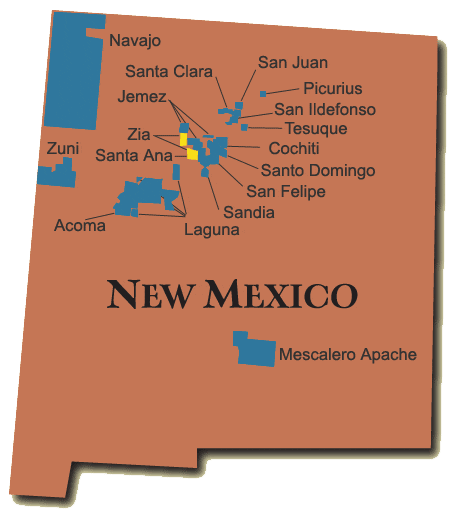Reservations
New Mexico: Zia
The Zia Pueblo was settled around 1250AD. During its heyday in the 16th and 17th centuries, it was one of the largest Pueblos with over 6,000 Indians. At that time it had 8 plazas and was at the center of Indian trade routes. The Zia lived in two and three story adobe homes that surrounded the plaza.
The Zia people were thought to have come from the Anasazi near the Chaco Canyon area. The great drought in the early 13th century was the cause of mass migrations of people to the edge of the Colorado Plateau and these people ended up in their present day settlement.
The central location of the Zia caused them a lot of problems. Navajo and Apache raiders were a constant threat. The Spanish first came in 1541 and interfered in the spiritual ways of the Zia. The Zia joined in the Pueblo Revolt of 1680, but the Spanish came back eight years later to destroy much of the Zia community. In 1692 the Zias accepted mass baptism and became Roman Catholics; however, this did not stop the traditional religious traditions of the Zia.
The Zia were successful dry land farmers and could sustain large populations. They grew corn, beans, squash and melons. The Zia imported irrigation technology to help make the farmlands more productive. The Spanish introduced livestock and today the economy here depends much more on ranching than farming.
The Zia is known as the home of the sun symbol that New Mexico uses on its state flag. The symbol currently used is one that has long been a trademark of Zia pottery. The people here speak Keresan and many have the ever present horno ovens in their yards for baking bread.
